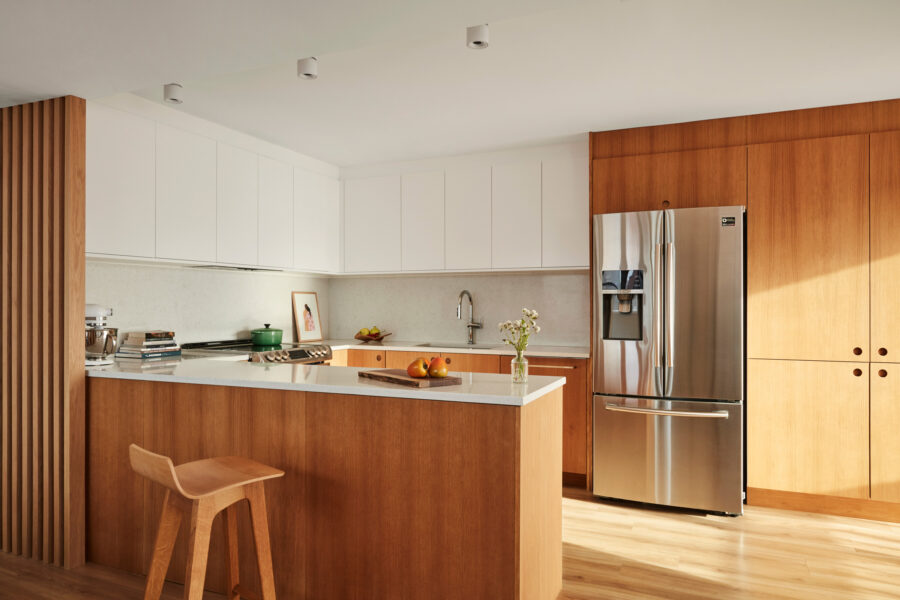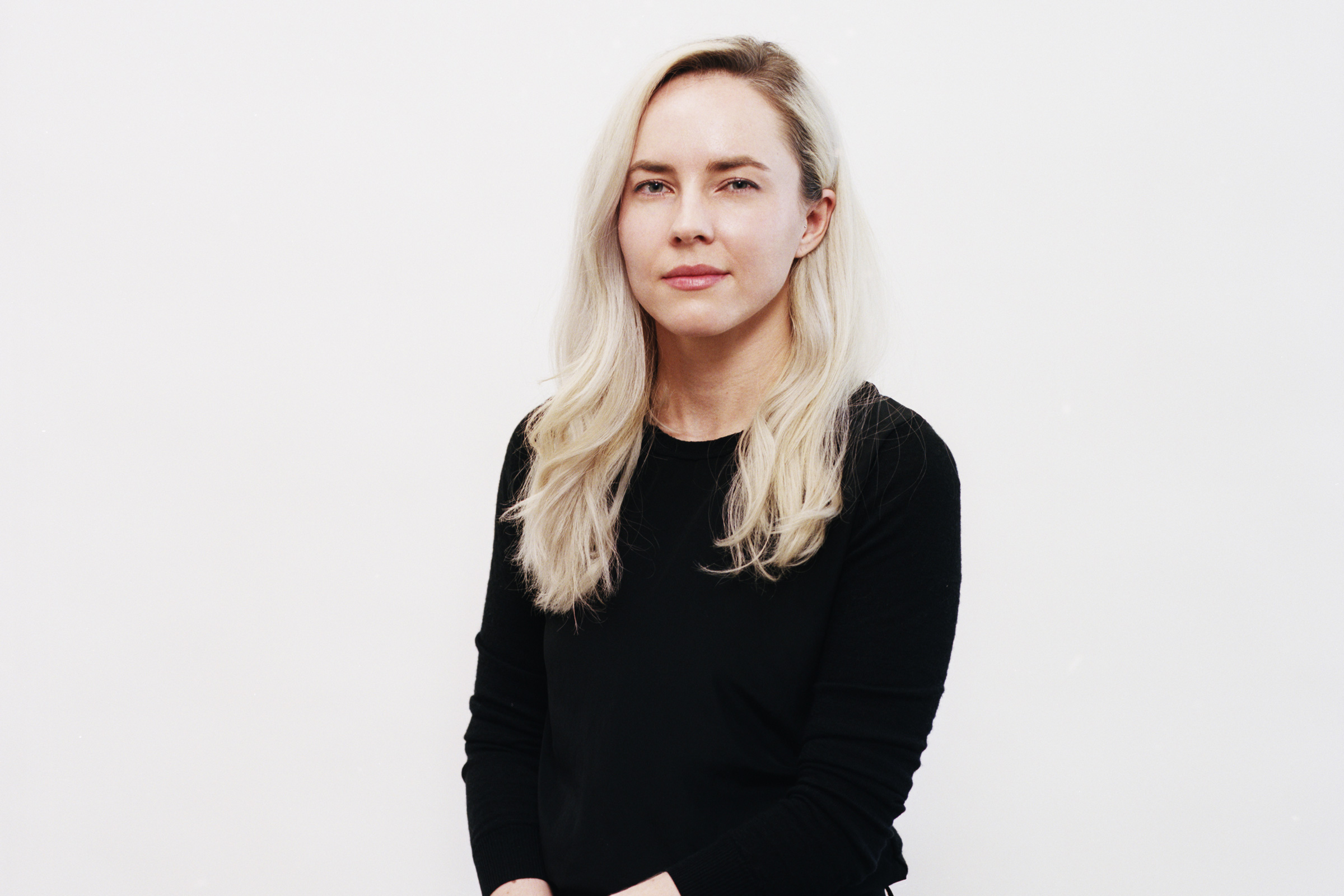Story at a glance:
- Lindsey Wikstrom, founder of Mattaforma, is a top architects designing for equity.
- Wikstrom founded her own firm, Mattaforma, in 2021—in the midst of a global pandemic.
- She wants people to understand how much materials matter—even before they get to the project site.
Lindsey Wikstrom has taught at Columbia and Yale, worked with Studio Gang, written an acclaimed book about mass timber, and founded her own firm, Mattaforma, in the midst of a pandemic.
“One of the best pieces of advice I got was if I don’t bet on myself how can I expect other people to bet on me?” she says, recalling conversations with friends and colleagues further along in their careers. In 2021 she took the leap. At the time Wikstrom was working with one of her mentors, David Benjamin, after he recruited her from Studio Gang to be the project architect for a new engine factory for Airbus in Hamburg. But when Covid hit, talk of innovations in the airline industry faded, and she decided it was time to try something new.
Wikstrom continues to be inspired by the mentors in her life—people like Benjamin, whose work largely focuses on biogenic materials; he founded The Living, a design studio and experiment in living architecture; and Hilary Sample, cofounder of Mos Architects; and Mabel Wilson, who co-directs the Global Africa Lab. “She’s leading the charge when it comes to understanding who built the built environment today. It’s mostly on the backs of enslaved peoples.”

In the early days Wikstrom’s Mattaforma projects were largely word of mouth. Soon after she started the office she began work on a residential project for a friend of a friend. The Edgewater project was a small renovation and addition with environmentally friendly materials and attention to detail, like a white oak screen in the kitchen handmade by a local millworker. Photo courtesy of Mattaforma
These multi-talented influences have in part led her to focus her own work on materials, equity, and, she says hesitantly, sustainability. “Recently I’ve been trying to steer people away from that word and using more specific language, like enhancing biodiversity or improving the health of workers—being clear about what we’re working on. It’s always been about this sense of resources and thinking about who gets access to those resources,” she says.
While teaching architecture at Yale Wikstrom asked students to consider where materials come from. She says it’s critical for people in the industry to understand the materials used in everyday situations and not just accept “the norm.” “Many modern materials are unhealthy for you and others,” she says.

Mattaforma designed a public classroom in a school for young adults on the autism spectrum. Photo by Lindsey Wikstrom
Mattaforma recently designed a classroom inside a public school for young adults on the autism spectrum in Queens. In that project the design team helped the client move away from luxury vinyl tile (LVT) to a vinyl flooring material that is Greenguard-certified with extremely low VOC emissions as well as being commercial grade. But it took some convincing, as some assumed LVT is a common practice in schools because of its durability and cost effectiveness. That may be true, but she says that doesn’t mean it’s not dangerous. “We need to constantly question the status quo when we’re designing, for example, with luxury vinyl tile or quartzite. If we say, ‘LVT is the typical material in schools, and we don’t vet that assumption, that’s on us. We would be contributing to the damaging of bodies for years to come, especially young and vulnerable people as well as the folks who manufacture materials, and the environment.”
LVT is known to emit toxins called phthalates, which are known to be cancer-causing and can lead to developmental delays and other issues, Wikstrom says. “Phthalates are released largely in the manufacturing process but also offgas after installation, which is why they are prohibited in children’s toys, but somehow they’re still used in the flooring of children’s schools. Ideally schools integrate natural material alternatives into their design guidelines, like flooring made from bio-polyurethane composites or vegetable oils, which are just as durable, but also safer.” As for quartzite, she says it is harmful to those cutting, grinding, and polishing it. “Natural stone is a better alternative because when it’s cut during the manufacturing process, it doesn’t release resin dust into the air and lungs of people nearby.”
It takes a level of care to question the status quo. That’s not intuitive for everyone.
In spring 2024 Mattaforma was completing their neurodivergent classroom, where students will learn skills like laundry and dishes as part of a class called Adapted Daily Living. The principal wanted an apartment unit in the school so students could immerse in the learning. The finished project has a full ADA kitchen, bedroom setup, and more so students can practice apartment living. “Each wall is painted a different color so it feels like you’re in a different room, and the materials are meant to be domestic, but they are also really durable,” Wikstrom says.
In general Wikstrom hopes for a future with more careful consideration of both individual needs and individual materials. “I think architects can do a better job of listening to the public. We have this habit of being very insular,” she says. “I’ve found the most enjoyable conversations are with people who really care about where their food comes from, for example. Those people, and most of our clients, really identify with this concept of material sourcing not because they’re interested in architecture and materials, but because they care what goes in their body. It’s not an elite architectural theory; it’s very human, and I find that to be so life-giving.”



